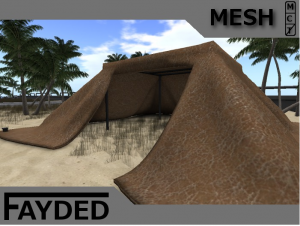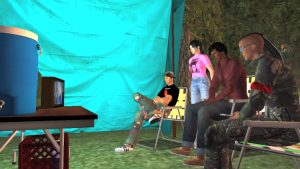Understanding what Indigenous futurism is has been a bit of a process for me. I first heard of the term last year and only had the most basic understanding of it, not fully comprehending all the information I was being provided. However this year, with working with medium as being just as important as content, I have a different way to look at Indigenous Futurism. A way that I believe is a much more in depth understanding of the term in and how it operates for our future and present.
Part 1
My new understanding of Indigenous futurism is that it explores the present and future in a way that rethinks what advanced technology, progress, and civilization is in an Indigenous lens. As Lou Catherine Cornum states “extractive and exploitative endeavors are just one mark of the settler death drive, which indigenous futurism seeks to overcome by imagining different ways of relating to notions of progress and civilization” (Cornum). Alternative ways of thinking about our future and present as Indigenous peoples is Indigenous Futurism. Indigenous people and allies therefore use Indigenous futurism to present new ways of thinking about progress and advanced technology. Advanced technology then, is used not as negative, but can be seen as a tool to create Indigenous futurism. This is exemplified in TimeTravellerTM where the old “state of the art” technology at the time, the panorama, is used by Caucasian people and dishonestly portrays Aboriginal people. Instead within the videos, the glasses which are cutting edge technology of the future, are used by Indigenous people to present themselves how they like. Moreover, Skawennati uses the internet and Machinima for TimeTravellerTM to exhibit positive use of advanced technology within Indigenous Futurism. The act of Skawennati creating the project itself and using these technologies is Indigenous futurism.
Furthermore, Indigenous Futurism doesn’t only challenge our view of the future but recognizes a way of thinking that is within ourselves, that we bring to share with others through our imagination. “The process of imagination is highly regarded as are the dreams we share and the art we create [to] express the futures we already carry with us” (Dillon 2). Therefore Indigenous futurism can be viewed as a tool. A tool which connects our ways of thinking with the future. With our Indigenous ways of thinking already in place, we can imagine a future that benefits Indigenous people and continues to incorporate our traditions and cultures. Dillon further states there’s an “… importance of our dreaming-dreaming as imagination as thinking as WILLED into BEING” (2). Here Dillon is implying that we are not only imagining our future but creating it! Imagining and creating Indigenous futurisms are a way to shape our future because by drawing from knowledge already in ourselves, using this to create an image and then aiming for it we can move forward with knowing there are different possibilities in the future for us. We can create better futures because we are already thinking about them. Connecting this to advanced technology, we can also imagine ourselves using technology that was once restricted to us. Now we can imagine it and use it to portray our own beliefs and stories which shape how we see ourselves in the future. The next step is working out how to get from present to that imagined future and that’s what Indigenous futurism provokes.
Part 2

My proposed new episode of TimeTraveller begins in 2138 in Montreal, Quebec. Karahkwenhawi and Hunter have a daughter named Voyage who is now a young teenager. Hunter is now a famous TV Host and he and Karahwenhawi still live in their mansion. The couple visits Karahwenhawi’s mother once in a while but are busy with their daily responsibilities (exhibited through dialogue about their busy schedules). The couple, while sitting in their living room, discuss how they’re noticing that their daughter is getting too absorbed in public image and fame because of all the VIP public events the family goes to. Their daughter walks in, distracted and not acknowledging her parents because of a screen that’s strapped to her wrist, she orders her technology on her wrist to state her ‘popularity score.’ Karahwenhawi brings up the idea with Hunter that they should take Voyage back in time to see her grandmother and take part in ceremony. Hunter agrees with this and Karahwenhawi and Hunter give Voyage a pair of TImeTravellerTM glasses and they all put on a pair and set the time and date.


The next scene switches to the time period of 2026 and Hunter, Karahkwenhawi and Voyage appear outside a sweat lodge on Kahnawake territory. Karahwenhawi’s mother is outside of the sweatlodge and hugs them all. Karahwenhawi explains their situation and that Voyage needs some time with community and family. The following portion is done as a montage to exhibit multiple days of them all participating, even weeks. Voyage’s grandmother teaches her of the traditions and the protocol of going to a sweat. Slowly Voyage becomes more interested in the sweat lodge because she is gaining more knowledge. Her parents

are there to support her in scenes as well. Scenes of the family of four happily watching TV together at the grandmother’s home is also part of the montage to exhibit that this episode’s purpose isn’t to show that the abandonment of technology is needed but instead that way it is can be used to benefit the strengthening of Indigenous culture and kinship.

The next scene the four family members are in their sweat lodge clothes and preparing for their last sweat of their visit before Hunter, Karahwenhawi, and Voyage have to go back to 2138 for a while. They all go into the sweat and come out feeling much more connected. It is evident that Voyage has benefited from the sweats because she enjoys her time with her family and cultural practices. She is not worried about her popularity score when her father asks. When the three leave to go back to 2138, Voyage takes a moving picture (like the pictures in Harry Potter) of her and her family. After they say good bye to Karahwenhawi’s mother they set their glasses, which they’ve been wearing this whole time, to 2138. Hunter, Karahwenhawi, and Voyage appear back at the mansion in 2138. They take of their glasses and Voyage immediately goes for her screen-wristband (which is like a phone). She posts the picture of her and her family on a social media site. They all then sit down and Voyage tells her parents that she hopes to visit her grandmother soon and show her the glasses sometime so that she can visit them in their time period.

The aim of this story is to exhibit how technology can be used to access forms of tradition and kinship. Voyage was only able to learn from her grandmother because of this technology and she wasn’t told to unlearn her connection to technology but instead how to use it in a decolonial way. Voyage, by the end of the episode, is interested in connecting her Mohawk knowledge with her media platform. This is also a form of Indigenous futurism because it shows the benefits of advanced technology, doesn’t assume this technology and process will be the ‘settler death drive,’ and presents Indigenous values. These Indigenous values include strengthening kinship ties and partaking in cultural and spiritual practices.
In conclusion, Indigenous futurism is a new way to look at our future in regards to advanced technology and progress. By imagining our future as Indigenous peoples, a future that is cultural and less oppressive then today, we can work towards this imagining to make it real. The knowledge that is already inside Indigenous people fuels this imagining and exhibits our goals for our future. In addition, my proposed episode for TimeTravellerTM is an example of Indigenous futurism because it carries off of the original episodes in a way which exhibits Indigenous cultural and kinship ties as well as the assistance of technology in these processes. In short I hope to further my creativity skills to employ Indigenous futurism in my work.
Works Cited
Cornum, Lou Catherine. “The Space NDN’s Star Map.” The New Inquiry, 26 Jan. 2015, http://thenewinquiry.com/essays/the-space-ndns-star-map/. Accessed 27 Nov. 2016.
Dillon, Grace L. “Indigenous Futurisms as Stardust Imaginings: Passweweg (Echomakers) of Indigenous Futurisms.” Kimiwan, 2014, pp. 1-2.
David Gaertner
December 1, 2016 — 9:44 pm
Great treatment here, Danielle. It really helps to bring to life your ideas on Indigenous futurism and the role of technology within it. Love that idea of the “popularity score” too; reminds me of one of my favourite Corey Doctorow stories:
http://www.goodreads.com/book/show/29587.Down_and_Out_in_the_Magic_Kingdom
You’ve made excellent progress in your definition of IF, but it needs to be nuanced a little more. You argue that IF represents a future “that is cultural and less oppressive,” but in what ways? Is there something in particular you are thinking of here? An example would help to flesh this out.
Good work this term!